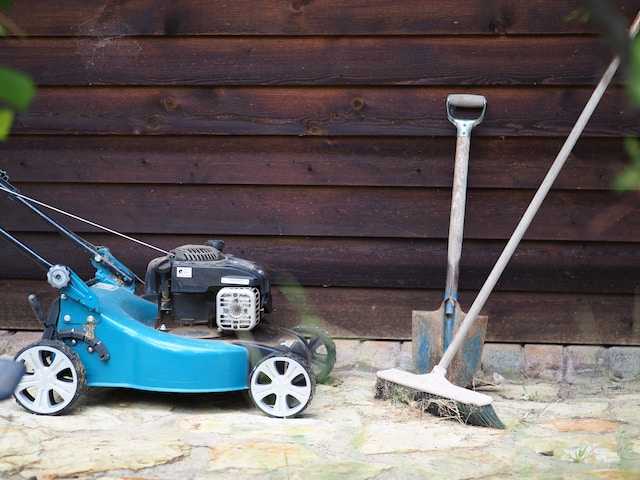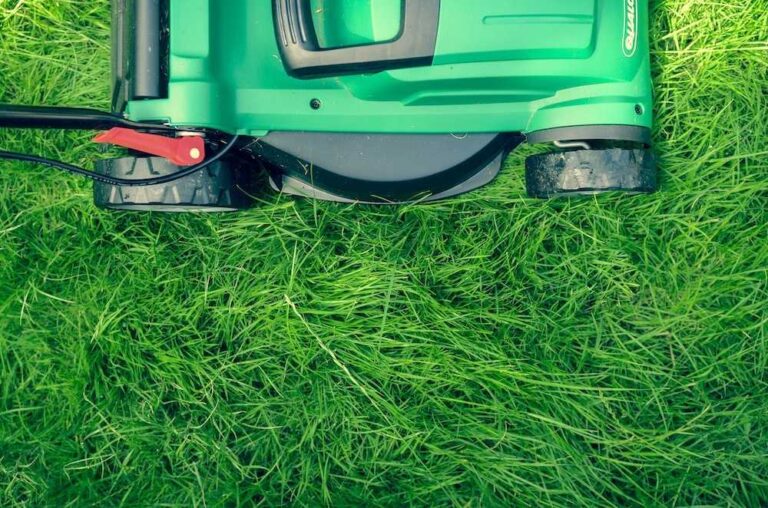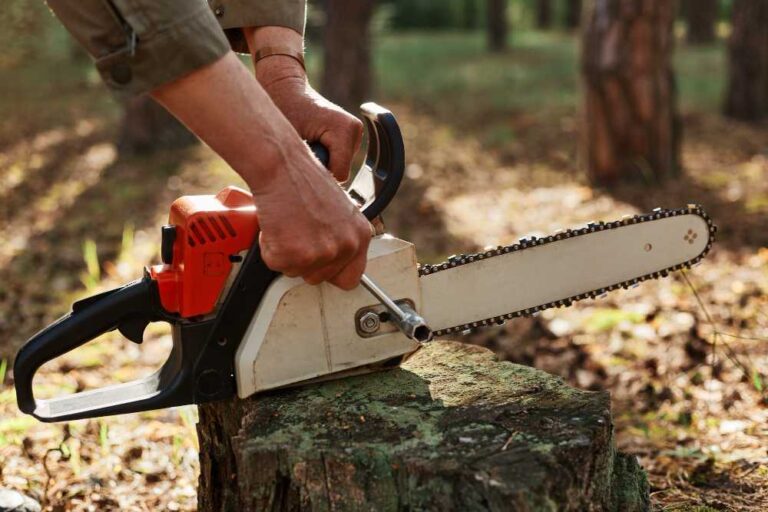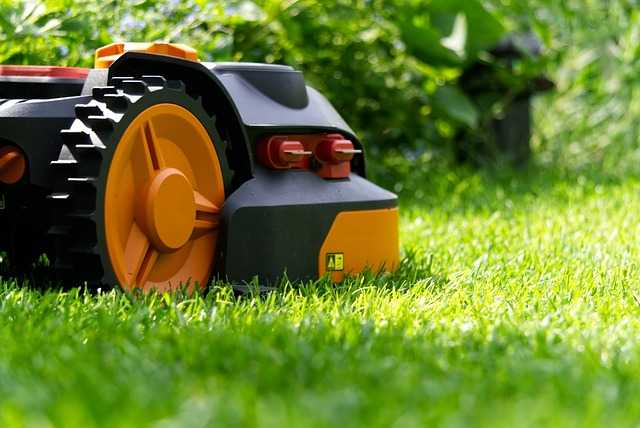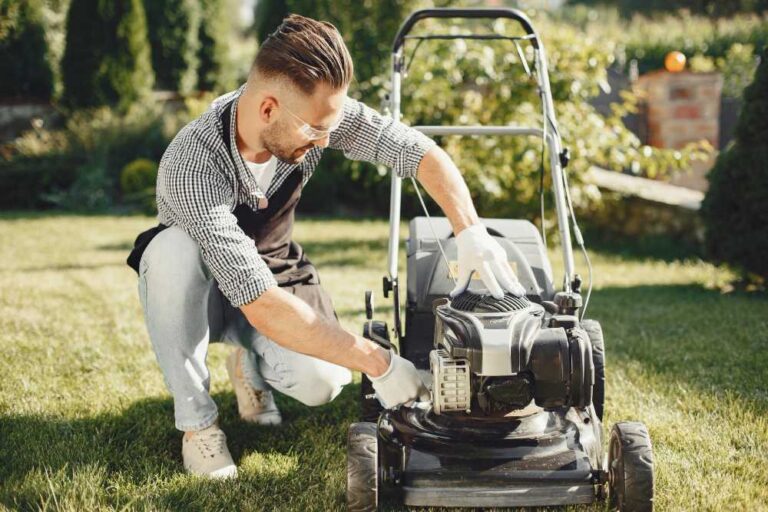A Guide to Using Choke on Lawn mower
Homeowners draw a lot of satisfaction from tending to their gardens. You can complete simple gardening activities, such as mowing, irrigation, applying fertilizers, and trimming edges. While these are simple tasks, you should make an effort to understand the functioning behind various gardening tools.
Lawnmowers are probably the most common gardening tools. If you love gardening, you should be familiar with the rev of the mower engine when starting. While there are many parts involved, the choke on lawnmower plays a crucial role in the period between starting the engine and cutting the grass. Below is a guide on how you should use and maintain the choke on lawnmower.
What is a Choke on Lawn mower?
Nearly all internal combustion engines have choke valves. As the name suggests, the valve allows users to limit the amount of air entering the carburetor during combustion. Choke valves are primarily used during ignition for an easier start. Choke valves on lawnmowers have the same functionality as the choke valve in cars.
Ideally, there is a choke lever that you should press during the ignition. However, some engines have primer bulbs, which function differently from choke levers. Instead of restricting air intake, the primer bulb injects extra fuel, increasing the fuel ratio in the combustion chamber. After the engine has warmed up, it burns gasoline more easily than during a cold start.
What is the Purpose of Choke on Lawn mower?
While there are different types of lawnmowers, most use internal combustion engines with choke valves on the body of the engine. Some have manual levers on the handle. A choke valve on a lawnmower has the following functions:
- Reduces airflow to the carburetor, which in return reduces internal pressure. This allows more fuel to be pushed into the combustion chamber during cold start.
- It helps create a rich fuel-air mixture in the combustion chamber. This allows a cold engine to run and warm up until it can run effortlessly with an open choke.
- Choke valves create a high partial vacuum, which increases the amount of fuel drawn.
- Choke valves lengthen the lifespan of riding lawnmowers.
How to Use Choke on Lawn mower
Like other internal combustion engines, your lawnmower engine requires a rich fuel mixture to ignite, especially if it hasn’t been used for a while. As mentioned, the choke valve restricts airflow, increasing the concentration of fuel in the fuel-air mixture entering the combustion chamber. This is an enriched mixture with a combustible combination that helps the engine start.
That said, the choke on lawn mower functions in four stages. The first step is when starting the lawnmower. You should engage the choke to close the valve leading to the carburetor when starting the lawnmower. This restricts the amount of air getting into the carburetor for a richer fuel mixture.
The rich fuel-air mixture allows for a convenient cold start. However, as the engine warms up, you should release the choke lever gradually to allow more air into the carburetor. Opening the valve decreases the concentration of fuel in the mixture, allowing the engine to run in a normal operating ratio.
You should release the choke fully after the engine has warmed up sufficiently. This allows the carburetor to deliver a normal fuel-air mixture for regular combustion.
Is It Bad to Run a Lawnmower with Choke On?
You shouldn’t run your lawnmower with the choke on for more than five minutes. This is the appropriate warm-up time for most internal combustion engines. Leaving your lawnmower to run with a choke on increases fuel consumption, causes overheating, and faster wearing, ultimately resulting in engine damage.
Even if the engine isn’t affected, operating your lawnmower outside the normal conditions for a long period can damage other parts of the mower that aren’t necessarily related to the fuel and ignition systems. Leaving the choke on lawn mower for long causes sluggish performance, and the mower produces a black smoke.
The sluggish performance and black smoke often result from flooding and a clogged carburetor. Flooding, as the name suggests, occurs due to significant fuel influx into the combustion chamber when the choke is left on for a few minutes. A flooded engine can lock up and stall.
Unfortunately, draining fuel out of a flooded combustion chamber can prove challenging. In most cases, you’ll have to open up the engine to drain it completely. Flooding also results from faulty choke, especially if the choke lever doesn’t open or close completely.
Leaving the choke on for long also results in a clogged carburetor. If your lawnmower perfectly starts with the choke on but dies suddenly, even after releasing the choke, the air and fuel mixture isn’t balanced. The best solution is to clean or replace the carburetor and avoid leaving it on for long.
Does Your Lawnmower Run Better with Choke On?
It is not uncommon for some homeowners to feel their mowers running better with a choke on. However, you shouldn’t be excited if your lawnmower runs better with the choke on all the time, even after ignition. This is a sign of a problem that shouldn’t be difficult to handle. If you don’t have the necessary repair skills, take your lawnmower to professionals.
For starters, if your mower runs better with the choke on, chances are the mixture in the combustion chamber is lean. This means a lot of air gets into the combustion chamber, and it only stabilizes when you choke the air intake. Such problems often result from air leaks, which can happen anywhere on the chamber, but mostly on the carburetor.
You should also expect this problem if there’s a clog or malfunction in the carburetor. Clogs or a malfunctioning carburetor restricts the amount of fuel entering the combustion chamber. Therefore, lowering the amount of air by holding the choke on levels the mixture. This problem often comes with a notable drop in performance.
Lastly, your lawnmower may run better with the choke on due to a contaminated fuel system. This occurs when a foreign body contaminates the carburetor, fuel intake area, or fuel tank. If you’ve inspected your mower and none of the above appears to be the cause, consider switching to fuel with a low alcohol percentage.
How to Fix Choke Problems
While DIYers with minimal technical know-how can fix various choke problems, you should always consult a professional mechanic. Below are maintenance suggestions for various choke problems:
· Fixing an air leak
An air leak in any part of the engine means more air is getting into the chamber. You should simply inspect the entire engine to identify the source of the leak. Inspect fuel lines and fuel primer for cracks and leaks. Similarly, tighten all pipes and valves leading to the carburetor.
· Fixing flooding problems
You’ll need some technical knowledge to prevent flooding in the combustion chamber. Besides not leaving the choke on for too long, you should maneuver the choke to restrict fuel intake. Starting a flooded mower engine on the first pull of the code is sometimes impossible.
Therefore, instead of pulling the cord on full choke repetitively, pull the starting cord until it’s at the cusp of starting, then draw the choke lever halfway. This allows some air to enter, while reducing the possibility of flooding.
· Fixing choke opening and closing
It is normal for faulty chokes to open and close irregularly. Fortunately, you can avoid this problem by adhering to various maintenance practices of your garden tools, including the lawnmower. If your mower choke opens and closes, check and lubricate the choke linkage and shaft. You should also use a choke cleaner to remove any grime or gunk.
An irregular opening and closing choke also suggest a problem with the choke linkage. In most cases, the linkage isn’t adjusted properly, hindering proper opening and closing. You can fix this by loosening the cables’ mounting bracket. Most lawnmowers have a user manual that guides on the steps to follow when adjusting choke linkage.
· Fixing contamination issues
Thoroughly cleaning the fuel system eliminates contamination issues. As mentioned, contamination results in a significant drop in lawnmower performance. You should clean the carburetor using any carb cleaner to remove any debris and varnish. Similarly, drain the fuel tank and clean it thoroughly. Don’t forget to check on the fuel lines and pipes before assembling everything.
If there are no cracks on the fuel pipes and the entire system is clean, your lawnmower has other problems not related to the fuel system. You should consider switching to non-alcoholic fuels for a change.
The Bottom Line
Choke valves on lawnmowers are very useful and easy to operate. While they may appear complicated, they are basic levers and buttons. Adjusting the choke on lawn mower reduces airflow in the engine, increasing the concentration of fuel in the combustion chamber. This makes it easy for the engine to spark and ignore. You should only use choke valves when necessary, as prolonged use can damage the engine.
